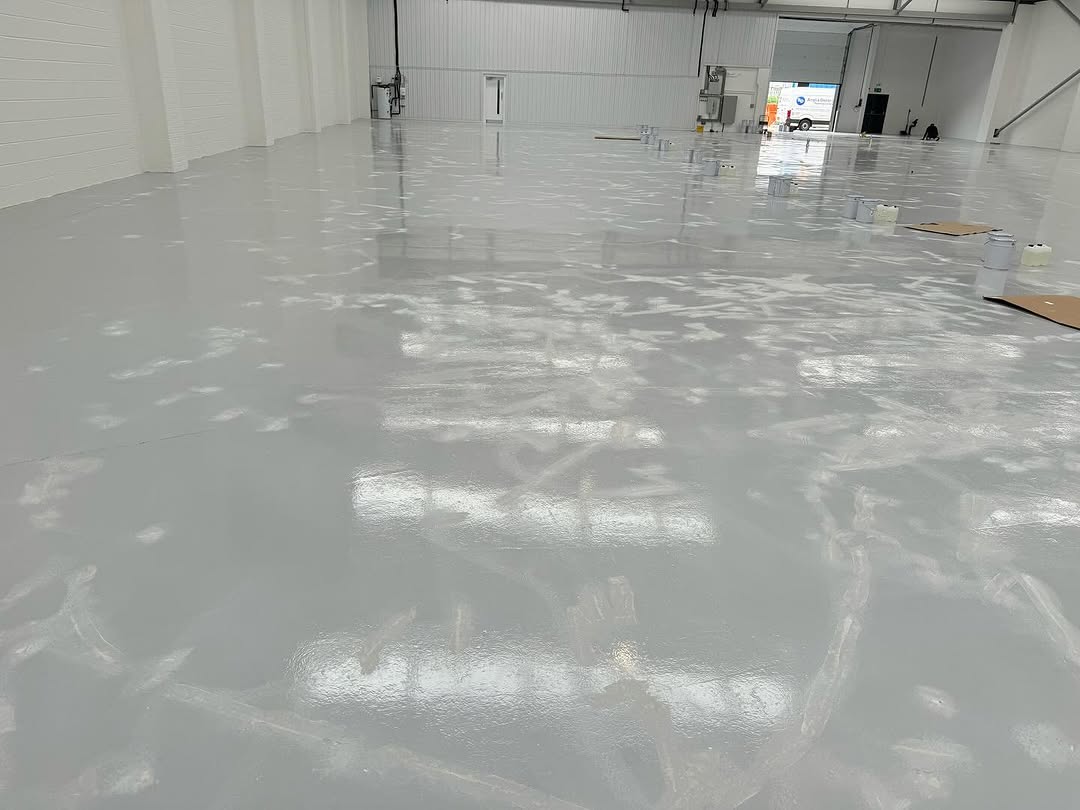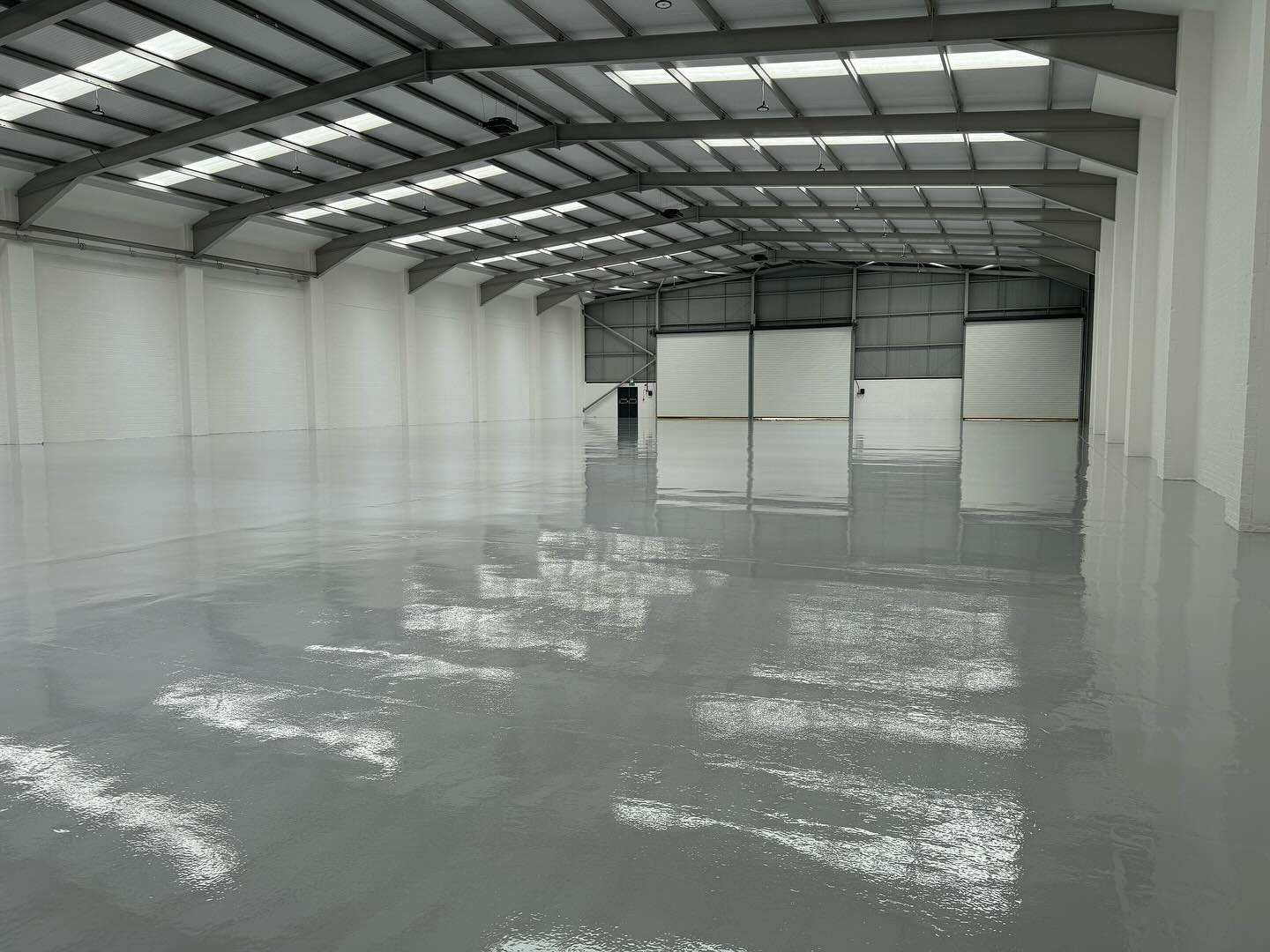Power floated concrete requires aggressive diamond grinding or shot blasting to achieve proper epoxy adhesion, adding £11-15 per m² to preparation costs. Hand trowelled concrete accepts coatings after basic grinding at £11-15 per m², but may have flatness variations requiring additional levelling. Without proper preparation, epoxy delamination rates reach 70% on power floated surfaces versus 10% on trowelled finishes.
The smoothest concrete often creates the biggest coating failures. Power floated concrete looks perfect but hides a dense, impermeable surface that rejects epoxy adhesion. Understanding the critical differences between power floated and hand trowelled finishes prevents costly delamination failures that plague uninformed contractors. After diagnosing hundreds of coating failures, we've identified exactly why preparation requirements differ so dramatically between these finishes.
Understanding Surface Density Differences
Power floating uses rotating blades to mechanically compress and polish concrete surfaces, creating a dense layer with minimal porosity. This process brings cement paste to the surface while driving aggregates deeper, resulting in a glass-like finish with surface hardness exceeding 7 on the Mohs scale. The closed pore structure that makes power floated floors durable also prevents coating penetration.
Hand trowelled concrete maintains an open pore structure despite its smooth appearance. Manual finishing lacks the intense mechanical pressure of power floating, leaving micro-porosity that accepts primers and coatings. Surface hardness typically measures 4-5 on the Mohs scale, with sufficient texture for mechanical adhesion even when visually smooth.
| Surface Property | Power Floated | Hand Trowelled |
|---|---|---|
| Surface Hardness | 6-7 Mohs | 4-5 Mohs |
| Porosity | <2% open pores | 5-8% open pores |
| Water Absorption | <1% by weight | 3-5% by weight |
| Primer Penetration | <0.1mm | 0.5-1mm |
| Adhesion Strength | 0.5-1 MPa untreated | 2-3 MPa standard |
Why Epoxy Fails on Power Floated Concrete
The burnished surface created by power floating prevents both mechanical and chemical adhesion mechanisms. Epoxy primers designed to penetrate concrete pores simply pool on the surface, creating a weak interface layer. Even when initial adhesion appears acceptable, thermal cycling and moisture vapour transmission cause progressive bond failure.
Microscopic analysis reveals power floated surfaces contain a weak layer of over-worked cement paste, typically 0.1-0.3mm thick. This layer delaminates under stress, taking the coating with it. The phenomenon, known as "surface laitance despite hardness," explains why coatings peel cleanly from apparently sound concrete.

Essential Preparation Methods Compared
For Power Floated Concrete:
- Diamond grinding with 30-grit metals bonds minimum
- Multiple passes to achieve CSP 3 profile
- Shot blasting to CSP 3-4 alternatively
- Acid etching ineffective due to low porosity
- Removal depth 1-2mm to reach porous concrete
- Vacuum grinding essential to verify profile
For Hand Trowelled Concrete:
- Light diamond grinding with 80-grit sufficient
- Single pass typically achieves CSP 2
- Acid etching viable for thin coatings
- Removal depth 0.5mm opens adequate porosity
- Focus on removing surface contaminants
Avoid Costly Coating Failures
Our specialists identify your concrete finish type and specify exact preparation requirements to ensure lasting adhesion.
Get Surface AssessmentTesting Methods to Identify Surface Type
Visual inspection alone cannot reliably distinguish power floated from well-finished trowelled concrete. Professional testing prevents preparation mistakes:
Water Drop Test: Place water droplets on clean concrete. Power floated surfaces show beading with contact angles exceeding 90°. Trowelled concrete absorbs water within 30-60 seconds.
Scratch Test: Draw a nail across the surface. Power floated concrete resists scratching, producing fine powder. Trowelled concrete scratches easily with visible groove formation.
Acid Drop Test: Apply dilute hydrochloric acid. Power floated surfaces show minimal reaction. Trowelled concrete fizzes immediately as acid reacts with accessible cement.
Cost Implications of Each Finish
| Cost Element | Power Floated | Trowelled |
|---|---|---|
| Basic Prep per m² | £11-15 | £11-15 |
| Equipment Required | Heavy grinder/shot blast | Standard grinder |
| Time per 100m² | 8-10 hours | 3-4 hours |
| Primer Type | Specialist penetrating | Standard epoxy |
| Primer Cost per m² | £11-15 | £11-15 |
| Failure Risk | High without prep | Low-moderate |

Common Failure Patterns
Power floated concrete failures typically manifest as large-scale delamination sheets, often removing entire room sections. The coating peels cleanly, leaving the smooth concrete exposed. Failures usually begin at edges or joints where differential movement concentrates stress, progressing rapidly once started.
Trowelled concrete failures appear as localised blistering or small delamination areas, usually related to contamination or moisture issues rather than systemic adhesion problems. These failures remain repairable through concrete floor repairs rather than complete recoating.
Proven Treatment Solutions
Mechanical Preparation: Diamond grinding remains the most reliable method for power floated surfaces. Use 16-30 grit metal bonds for initial passes, progressing to 80 grit for final texture. Verify profile achievement using plastic replica chips showing CSP 3 minimum.
Chemical Etching Enhancement: After mechanical preparation, apply specialised primers containing silane/siloxane technology. These molecular bridges penetrate micro-pores created by grinding, doubling adhesion strength compared to standard primers.
Intermediate Bonding Layers: For critical applications, apply a scratch coat of epoxy mixed with fine sand immediately after priming. This creates mechanical keying for subsequent coats, particularly important for self-levelling systems.
Final Recommendations by Application
For new construction, specify hand trowelled finish if epoxy coating is planned. The minimal cost difference during construction saves thousands in preparation costs later. Power floating should be reserved for polished concrete applications or areas receiving no coatings.
For existing power floated floors, budget for proper preparation rather than risking failure. The £11-15 per m². Contact us for a precise quote based on your specific project requirements additional preparation cost prevents £11-15 per m² complete reinstallation after delamination.
Consider alternative systems designed for smooth concrete: moisture-curing urethanes or specially formulated low-viscosity epoxies that partially penetrate dense surfaces. While more expensive initially, they reduce preparation requirements on problematic substrates.
For comprehensive preparation guidance, see our detailed guide for coating power floated concrete. For standard preparation methods, consult our surface preparation comparison guide.
Ensure Proper Surface Preparation
Don't let smooth concrete fool you. Our experts test your surface and specify exact preparation to guarantee lasting coating adhesion.
Prevent Coating Failure